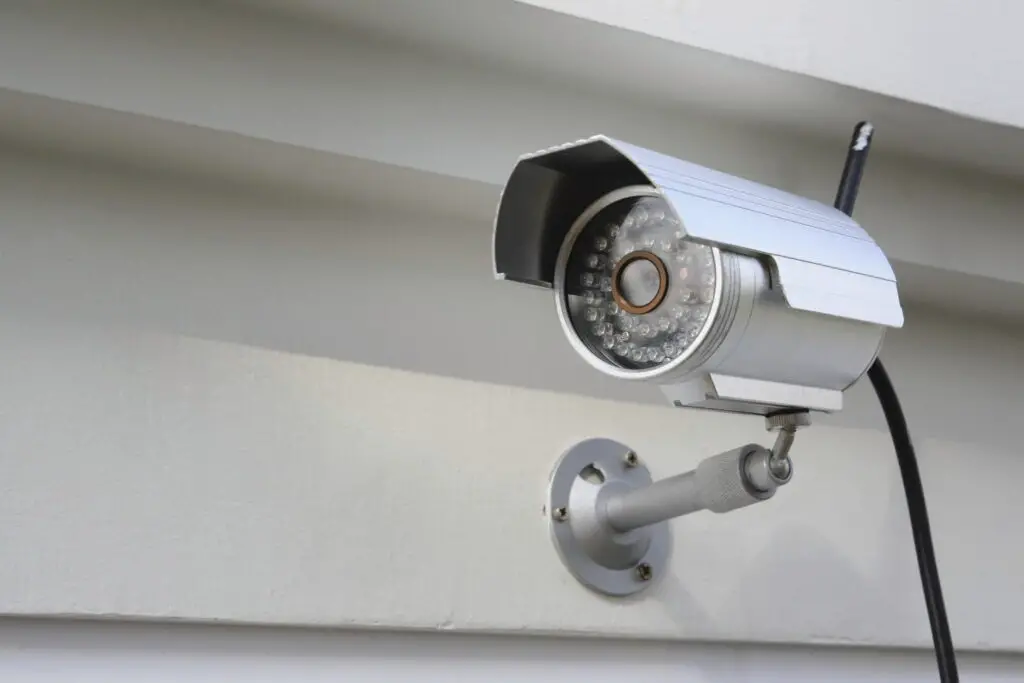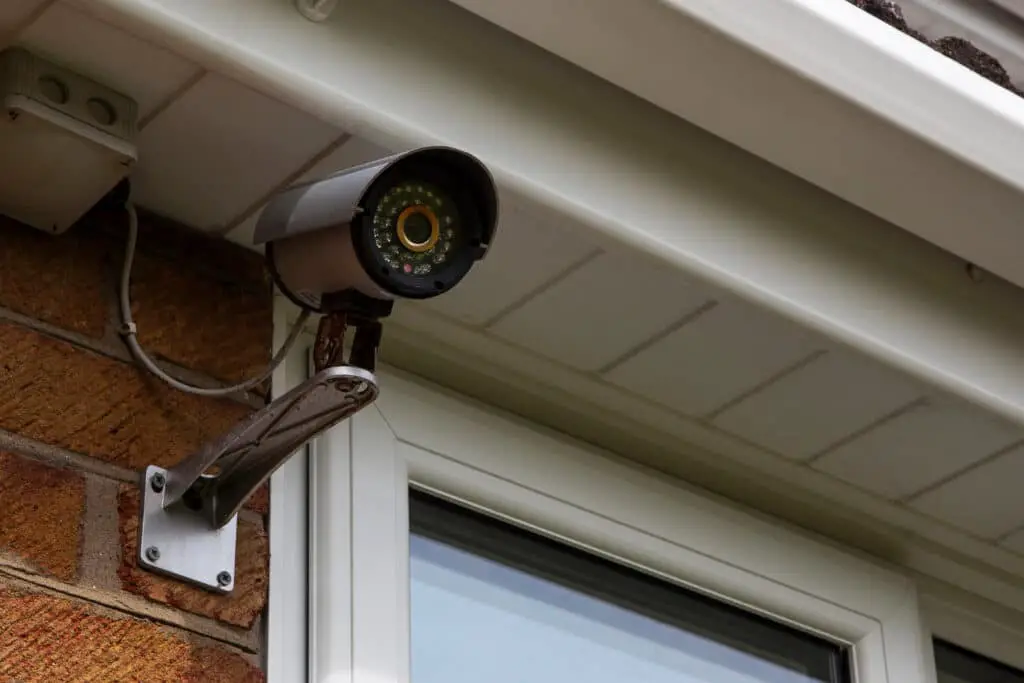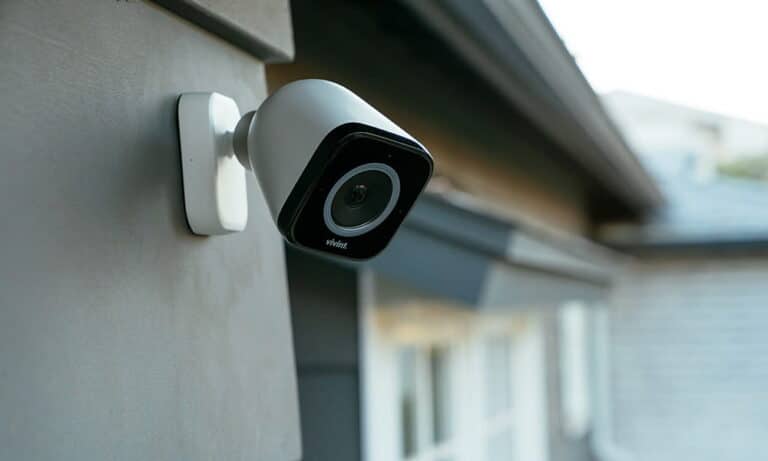Introduction
Ensuring the safety and security of our homes has become an essential priority in today’s world. With advancements in technology, home security cameras have become a popular choice for homeowners seeking an extra layer of protection. Placing these cameras strategically around the property can provide valuable surveillance and deter potential intruders. However, determining the optimal locations for home security cameras requires careful consideration and planning.
When it comes to placing home security cameras, the primary objective is to capture critical areas while maximizing the camera’s effectiveness. The front entrance is a crucial point to monitor, as it is the most common point of entry for intruders. Placing a camera here can capture important details such as faces, license plates, or suspicious activities. Additionally, back and side entrances, windows, and garages are other vulnerable spots that should be covered by cameras.
Considering the layout of the property is also crucial for camera placement. Large open spaces, such as yards or driveways, may require wide-angle cameras with a broader field of view, while narrower spaces like hallways or staircases might benefit from fixed-position cameras. Assessing the lighting conditions is equally important, as cameras should be positioned to avoid glare, direct sunlight, or low-light areas.

Where should outdoor security cameras be placed?
- Security cameras should be placed at the most obvious points of entry: ground-floor doors and windows, especially the main entryway and any side or back doors.
- Garages and driveways are considered entryways, so consider installing security cameras that cover those areas.
Outdoor security cameras should be strategically placed to maximize their effectiveness in monitoring and protecting your property. Here are some key considerations for camera placement:
Entry Points
Install cameras near all entry points, such as doors, windows, and gates. These areas are commonly targeted by intruders, and having cameras in place can capture crucial details for identification and deter potential burglaries.
Perimeter Coverage
Position cameras to cover the perimeter of your property. This includes the front and back yards, driveways, and walkways. By monitoring these areas, you can detect any suspicious activities or individuals approaching your home.
High-Traffic Areas
Identify areas with high foot traffic, such as pathways, staircases, or gathering spots. Placing cameras in these locations ensures a higher chance of capturing any incidents or unusual behavior that may occur.
Blind Spots
Identify and address any blind spots or hidden areas where intruders could potentially enter undetected. By strategically placing cameras to cover these areas, you can eliminate vulnerabilities and enhance the overall security of your property.
Outdoor Valuables
If you have outdoor valuables like vehicles, bicycles, or equipment, consider installing cameras specifically to monitor these items. This provides an extra layer of protection against theft or vandalism.
Proper Height and Angles
Ensure that cameras are mounted at an appropriate height and angle to capture clear and useful footage. Avoid obstructions and adjust the camera positioning for optimal coverage.
Should you put security cameras inside your house?
Home security cameras aren’t just useful for policing your property; they’re also helpful for keeping an eye on children and pets when you can’t be there.
Installing security cameras inside your house can provide additional layers of protection and peace of mind. Here are some reasons why placing security cameras inside your home can be beneficial:
Enhanced Indoor Security
Indoor security cameras help monitor and safeguard the interior of your house, including common areas, entryways, and important rooms such as bedrooms or offices. They act as a deterrent to potential burglars and provide valuable evidence in case of a break-in.
Monitoring for Suspicious Activities
Indoor cameras allow you to keep an eye on your home even when you’re away. You can check for any suspicious activities, such as unauthorized entry, vandalism, or theft, and take appropriate action in real-time.
Child and Pet Monitoring
Security cameras indoors provide an excellent way to keep an eye on your children or pets. You can ensure their safety, monitor their activities, and be alerted to any potential hazards or emergencies.
Remote Access and Notifications
Many indoor security cameras offer remote access through smartphone apps or web interfaces. This allows you to view live feeds, receive notifications, and even communicate with individuals at home, providing an added sense of security and control.
Peace of Mind
Knowing that your home’s interior is being monitored can give you peace of mind, especially if you live in a high-crime area or have valuable possessions. It allows you to feel more secure, even when you’re not physically present.
How many cameras needed for home security?
As a general rule, 3-4 cameras for the following areas are a great start for most homes: A doorbell camera to keep an eye on the front door and packages. 1-2 outdoor cameras for the front and back of the house. An indoor camera inside to watch valuables, kids, or pets.
The number of cameras needed for home security depends on various factors, such as the size and layout of your property, the level of coverage desired, and specific security concerns. While there is no one-size-fits-all answer, here are some considerations to help determine the number of cameras needed:
Entry Points
Start by identifying all the entry points to your home, including doors, windows, and any other vulnerable areas. It’s advisable to have cameras covering each of these points to capture potential intruders or suspicious activities.
Perimeter Coverage
Assess the size of your property and consider installing cameras to cover the entire perimeter. This ensures comprehensive surveillance and minimizes blind spots.
High-Traffic Areas
Take into account areas with high foot traffic, both inside and outside your home. These may include hallways, staircases, living areas, or outdoor gathering spots. Placing cameras in these areas helps monitor activity and can provide valuable evidence if needed.
Valuable Assets
Consider installing cameras to protect valuable assets such as expensive electronics, artwork, or safes. These cameras can be dedicated to monitoring specific areas where these items are located.
Specific Concerns
Take into account any specific security concerns you may have, such as a high crime rate in your neighborhood or previous security incidents. Additional cameras can be placed strategically to address these concerns, focusing on areas that require extra attention.
How far does a home security camera see?
Generally speaking, security cameras have a range of anywhere between 10 and 70ft during the day. Alternatively, some night-vision security cameras have a range of 100-200ft!
The distance that a home security camera can see depends on several factors, including the camera’s lens focal length, sensor size, and resolution. These factors determine the camera’s field of view (FOV) and the level of detail captured at different distances.
A camera’s lens focal length, measured in millimeters (mm), plays a significant role in determining its viewing distance. Cameras with shorter focal lengths have wider FOVs, allowing them to capture a larger area but with less detail. Conversely, cameras with longer focal lengths have narrower FOVs but can zoom in and capture more details at a greater distance.
The sensor size and resolution of a camera also impact its visibility range. Higher resolution cameras can capture more detail, which enables clearer visibility at greater distances. However, it’s important to note that the resolution alone does not determine the visibility range; it works in conjunction with the lens focal length to define the camera’s capabilities.
Additionally, environmental factors such as lighting conditions and the presence of obstacles can affect how far a home security camera can see. Adequate lighting, either natural or artificial, improves visibility, while poor lighting conditions may limit the camera’s range. Obstructions like trees, walls, or buildings can also reduce the camera’s visibility by blocking its line of sight.
Are home security cameras always recording?
Most home security cameras are motion-activated and will record when they detect motion, as well as send you an alert. Some can record 24/7, which is known as continuous video recording (CVR). A security camera is an excellent tool for providing home security and the peace of mind that goes with it.
Home security cameras can operate in different recording modes, and whether they are always recording or not depends on the specific camera system and settings chosen by the homeowner. Here are some common recording modes for home security cameras:
Continuous Recording
Some cameras are set to record continuously, capturing footage 24/7. These cameras typically store the recorded footage on a local storage device or a cloud-based storage service. Continuous recording ensures that all activities within the camera’s field of view are captured, but it can consume a significant amount of storage space.
Motion-Activated Recording
Many home security cameras are equipped with motion sensors that trigger recording when motion is detected within their range. This mode conserves storage space by recording only when there is activity, reducing the amount of footage to review. Motion-activated recording is commonly used to capture significant events or potential intrusions.
Scheduled Recording
Some camera systems allow users to set specific time frames during which recording will occur. This can be useful for homeowners who want to record during specific hours, such as when they are away from home or during nighttime hours.
It’s important to note that camera systems may offer customization options, allowing users to adjust recording settings according to their preferences. Users can also typically access the recorded footage for review or retrieval at a later time. Ultimately, whether home security cameras are always recording or not depends on the chosen recording mode and settings configured by the homeowner. It’s essential to understand the capabilities of the camera system and select the recording mode that best suits your security needs and storage requirements.

Can I put a camera on my front door?
Security cameras are allowed on your own property. However, it is illegal to record anyone without their consent in places where there is an expectation of privacy.
Yes, it is common and highly recommended to put a camera on your front door as it serves as a crucial entry point to your home. Placing a camera here offers several benefits and enhances the security of your property:
Deterrence
Visible cameras act as a deterrent to potential intruders. When would-be burglars see a camera at the front door, they are more likely to think twice before attempting a break-in.
Monitoring Visitors
Having a camera at the front door allows you to monitor and identify anyone who approaches or rings the doorbell. This is particularly useful for keeping an eye on package deliveries, verifying visitors, or capturing footage of suspicious individuals.
Evidence Collection
In the unfortunate event of a break-in or an incident at your front door, having a camera can provide crucial evidence to law enforcement or insurance companies. Clear footage can help identify intruders and support any legal actions or insurance claims.
Remote Access
Many front door cameras come with remote access features, allowing you to view the live feed or recorded footage from your smartphone or computer. This enables you to keep tabs on your front door even when you’re away, providing added convenience and peace of mind.
Communication
Some front door cameras are equipped with two-way audio capabilities, allowing you to communicate with visitors remotely. This can be useful for interacting with delivery personnel or deterring unwanted individuals.
When installing a camera on your front door, consider its placement to capture a wide-angle view of the area while minimizing blind spots. Ensure the camera is weatherproof and positioned out of reach to prevent tampering or theft attempts.
Are security cameras safe?
Can Home Security Cameras be Hacked? Any device connected to the internet can be hacked, and that includes home security cameras. Wired cameras are less vulnerable than Wi-Fi cameras, and those with local storage are less vulnerable than cameras that store video on a cloud-based server.
Security cameras themselves are generally safe devices used for surveillance and protection. However, there are some considerations to ensure the security and privacy aspects surrounding their usage:
Data Protection
It is essential to choose reputable brands and follow best practices for securing your security camera system. This includes regularly updating firmware, using strong passwords, and securing the network to prevent unauthorized access to the camera feed or stored footage.
Secure Network
Ensure that the cameras are connected to a secure and encrypted network. Use a unique and robust password for the camera’s administrative interface and enable two-factor authentication, if available, to add an extra layer of security.
Privacy Concerns
While security cameras provide valuable surveillance, it’s crucial to respect the privacy of individuals. Avoid placing cameras in private areas such as bedrooms or bathrooms. Communicate the presence of cameras to guests or employees to maintain transparency.
Secure Storage
If the cameras store footage locally or on the cloud, ensure the storage is secure and encrypted to prevent unauthorized access or data breaches.
Regular Maintenance
Keep the camera system up to date with the latest firmware and security patches provided by the manufacturer. Regularly review the camera system’s settings and permissions to ensure proper security configurations.
By following these precautions, security cameras can be safe tools for enhancing the security of your property. However, it is essential to remain vigilant and maintain proper security measures to protect both the camera system and the privacy of individuals within its scope.
What is the maximum distance surveillance camera?
What is the longest distance for a security camera? It’s unusual for a security camera’s range to go beyond 150 feet, but some surveillance devices may be capable of up to 500 feet or more.
The maximum distance a surveillance camera can cover depends on several factors, including the camera’s focal length, lens type, resolution, and environmental conditions. Here are some considerations regarding the maximum distance a surveillance camera can effectively monitor:
Focal Length and Lens Type
Cameras with longer focal lengths and zoom capabilities can capture details at greater distances. These cameras can provide more magnification and allow for monitoring subjects farther away.
Lens Quality and Zoom
High-quality lenses with advanced zoom capabilities can extend the camera’s reach and provide clearer images at greater distances. Optical zoom is preferable to digital zoom, as it maintains image quality.
Resolution
Higher resolution cameras capture more detail, allowing for better visibility and identification of objects or individuals at greater distances. Cameras with higher resolutions, such as 4K or higher, offer increased clarity and detail even when zoomed in.
Lighting Conditions
Adequate lighting plays a crucial role in camera visibility. Cameras perform best in well-lit conditions, whether natural or artificial. Insufficient lighting may limit the camera’s range or affect image quality.
Environmental Factors
Environmental conditions, such as fog, rain, or obstructions, can affect a camera’s visibility. Unfavorable weather conditions or physical barriers like trees, walls, or buildings can limit the camera’s maximum distance.
Surveillance cameras can cover distances ranging from a few dozen feet to hundreds of feet or even more, depending on the camera’s specifications and the aforementioned factors.
Which are the essential areas to cover with security cameras in a home?
When it comes to home security, certain areas should be prioritized for camera coverage to ensure comprehensive surveillance. Here are some essential areas to consider when placing security cameras in a home:
Front Entrance
The front entrance is a critical area to cover as it is the primary point of entry for intruders. Placing a camera here captures details of individuals approaching the front door, providing valuable evidence and deterring potential burglaries.
Backyard and Exterior Perimeter
The backyard and exterior perimeter of the home should be covered to monitor any suspicious activities or intrusions. This includes monitoring windows, gates, fences, and other vulnerable access points.
Side Entrances
Side entrances, such as side doors or garage doors, are often targeted by intruders. It is important to position cameras to capture these areas and ensure complete surveillance of all entry points.
Common Living Spaces
Placing cameras in common living spaces such as the living room, kitchen, or family room can provide an overview of activities happening inside the home. This allows for monitoring any unauthorized entry or potential threats to family members or valuables.
Staircases and Hallways
Staircases and hallways are often used as access points within the home. Installing cameras in these areas helps capture movement and provides additional coverage.
Interior Valuables
If you have valuable possessions like artwork, electronics, or safes, it is advisable to have cameras dedicated to monitoring these specific areas. This ensures enhanced protection and evidence collection in case of theft or vandalism.

Conclusion
Selecting the right locations for home security cameras is essential for maximizing their effectiveness and enhancing the overall security of your home. By carefully considering the layout of your property, identifying vulnerable areas, and understanding the specific needs of each location, you can make informed decisions about camera placement.
Placing cameras at key entry points such as front and back doors, windows, and garages allows for capturing important details related to potential intrusions. These areas are often the primary targets for burglars and can provide valuable evidence in the event of a break-in. Additionally, ensuring proper coverage of large open spaces, such as yards or driveways, can help detect any suspicious activities occurring outside your home.
Considering lighting conditions is crucial when positioning security cameras. Avoiding glare, direct sunlight, or areas with poor lighting ensures clear and usable footage. It may be necessary to use additional lighting solutions or select cameras equipped with features like infrared or night vision capabilities to capture clear images in low-light environments.

